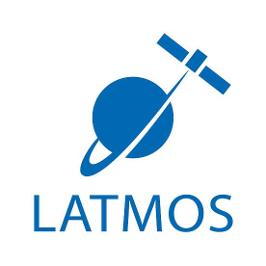Observations of Mercury's exosphere with the visible channels of PHEBUS during the first two Mercury flybys with the BepiColombo mission
Description
BepiColombo has already performed two flybys of Mercury, the first one on October 1st 2021 and the second one on June 23rd 2022.
Temporal extent Mercury flyby#1: 2021-10-01T23:04:39 to 2021-10-02T00:04:48 Data access Platforms The Probing the Hermean Exosphere by UV Spectroscopy (PHEBUS) instrument is a multiple channel instrument composed of two spectrographs operating in overlapping spectral ranges in the ultraviolet (EUV and FUV) and two additional visible lines (potassium and calcium centered near 404 and 422 nm).
The instrument and its scientific goals are described in details in [1] and [2].
During both flybys, the visible channels of PHEBUS (Probing of Hermean Exosphere By Ultraviolet Spectroscopy) were activated.
The channel c404 is centered at the emission line of potassium at 404 nm while the other channel, c422, is centered at the emission line of calcium at 422 nm.
During the first flyby, the visible channels were on for 1 hour, starting half an hour before the closest approach.
During the second flyby, the visible channels were activated for 1h15, starting a quarter of an hour before the closest approach.
The boresight of PHEBUS was in a fixed direction with respect to the stars during the whole sequence, pointing close to the north ecliptic pole and almost tangential to the limb at the equator. We observed Mercury’s extended exosphere of Ca beyond ~10,000 km. We have detected additional species with the channel c404 but comparison with previous studies is unconclusive and further analysis will be necessary to identify this species.
These datasets contain the total count rate recorded by PHEBUS visible channels as well as the associated dark count rate and the uncertainty for the total count rate.
Each dataset also contains information to reconstruct the geometry of observation (Mercury and BepiColombo positions, PHEBUS boresight and Sun direction).
Each flyby has its own dataset.
Mercury flyby#2: 2022-06-23T09:29:20 to 2022-06-23T10:22:40
PHEBUS instrument
The PHEBUS project is funded by National Space Agencies of France (CNES), Japan and Russia (Roscosmos). Instrument ground calibrations were also supported by Italian Space Agency.
BepiColombo is Europe's first mission to Mercury. Launched on 20 October 2018, it is on a seven year journey to the smallest and least explored terrestrial planet in our Solar System.
When it arrives at Mercury in late 2025, it will gather data during its one-year nominal mission, with a possible one-year extension.
The mission comprises two spacecraft: the Mercury Planetary Orbiter (MPO) and the Mercury Magnetospheric Orbiter (Mio).
BepiColombo is a joint mission between ESA and the Japan Aerospace Exploration Agency (JAXA), executed under ESA leadership.
Publications
[1] Chassefière, E., J-L. Maria, J-P. Goutail, E. Quémerais, F. Leblanc, S. Okano, I. Yoshikawa, O. Korablev, V. Gnedykh, G. Naletto, P. Nicolisi, M-G. Pelizzo, J-J. Correia, S. Gallet, C. Hourtoule, et al. PHEBUS : a double ultraviolet spectrometer to observe Mercury’s exosphere, Planet. Space Sci., 58, 201-223, (2010)
https://doi.org/10.1016/j.pss.2008.05.018
[2] Quémerais, E., J-Y. Chaufray, D. Koutroumpa, F. Leblanc, A. Reberac, B. Lustrement, C. Montaron, J-F. Mariscal, N. Rouanet, I. Yoshikawa, G. Murakami, K. Yoshioka, O. Korablev, D. Belyaev, M.G. Pelizzo, A. Corso, and P. Zuppella, PHEBUS on
BepiColombo : Post-launch update and instrument performance, Space Sci. Rev., 216 :67, (2020)
https://doi.org/10.1007/s11214-020-00695-6
Contacts
Principal Investigator/Owner:
Eric Quémerais (LATMOS/IPSL, UVSQ Université Paris-Saclay, Sorbonne Université, CNRS, Guyancourt, France) Eric.Quemerais@latmos.ipsl.fr
Graduate student:
Rozenn Robidel (LATMOS/IPSL, UVSQ Université Paris-Saclay, Sorbonne Université, CNRS, Guyancourt, France) rozenn.robidel@latmos.ipsl.fr
Other (Data & DOI manager):
Reberac Aurélie (LATMOS/IPSL, UVSQ Université Paris-Saclay, Sorbonne Université, CNRS, Guyancourt, France) Aurelie.Reberac@latmos.ipsl.fr
Dataset information
Howto cite




